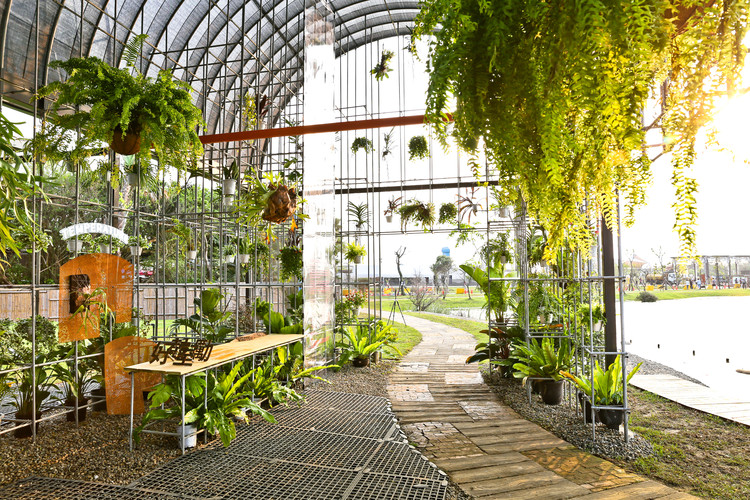7 Tips to Make Your Greenhouse Installation Easy

Urban agriculture offers an avenue to provide fresh, local food to urban communities, with success contingent on favorable perception and community acceptance. The achievement of this concept is closely linked to the positive sentiments of nearby residents, significantly influencing their embrace of local farming. Particularly pertinent is the escalating demand for agricultural solutions, as people turn to innovative methods exemplified by a noted national greenhouse company.
During the national shutdowns and pandemic, images portrayed furloughed government workers lining up for donated meals, highlighting the immediate food insecurity risk faced by around one in eight Americans. For instance, in the state of California alone, 80 percent of its population resides in cities. Nourishing the San Francisco Bay Area’s 7 million inhabitants across nine counties involves daily transportation of 2.5 to 3 million tons of food over an average span of 500 to 1,000 miles. This intricate system consumes substantial energy, emits significant pollution, and remains susceptible to major disruptions such as earthquakes.
Furthermore, it overlooks 1 in 8 regional residents living below the poverty line – predominantly seniors, children, and minorities. Limited access to quality food persists due to poverty and a 32.7 percent supermarket deficiency in low-income areas compared to more affluent neighborhoods within cities. This phenomenon can be overcome through sustainable agricultural practices like establishing commercial greenhouses.
Greenhouse Benefits for Growing
Greenhouses offer a controlled environment that empowers optimal plant cultivation. The regulated temperature, humidity, and light conditions foster year-round growth, extending growing seasons and enabling the cultivation of a diverse range of plants. The protective barrier shields crops from harsh weather, pests, and diseases, enhancing yield and quality. Additionally, greenhouse gardening conserves water by minimizing evaporation and allows for precise nutrient management, promoting healthier plants. Greenhouses are particularly advantageous for delicate or exotic species that require specialized conditions. These structures facilitate sustainable gardening by reducing reliance on chemical interventions and excessive water usage, making them an indispensable asset for both hobbyists and commercial growers.
Professional Help vs. DIY Greenhouse
Choosing between professional assistance and a DIY approach for greenhouse construction depends on various factors. Those with limited time, construction skills, or complex design requirements may find professional help more suitable. Professionals can provide tailored solutions, ensuring proper structural integrity and functionality. Commercial growers or enthusiasts seeking large, intricate greenhouses may benefit from expert input to maximize efficiency and investment.
Conversely, DIY greenhouse projects can be fulfilling for hands-on gardeners with construction experience. It offers creative freedom, cost savings, and a sense of accomplishment. Small-scale or hobby gardeners may opt for DIY options as they often require modest structures.
Ultimately, the decision should align with individual needs, budgets, and goals. A hybrid approach is possible, where professionals handle critical aspects like structural design, while DIY efforts focus on customization and interior setup. Regardless of the choice, a well-constructed greenhouse can elevate gardening experiences, enabling thriving plant growth and year-round enjoyment.
7 Easy DIY Tips For Installation of Greenhouse
Embarking on a DIY installation of a greenhouse can be an exciting and rewarding endeavor. To ensure a smooth and successful project, consider these seven tips that will help simplify the process and lead to a functional and thriving greenhouse.
- Thorough Planning
Begin with a well-thought-out plan that includes the greenhouse dimensions, orientation, materials, and location. Proper planning helps you avoid costly mistakes and ensures that your greenhouse meets your specific needs. Talk to the local garden supplies store to discuss ideas. Watch videos on social media platforms like Youtube and follow people who have undertaken similar projects.
- Choose the Right Location
Select a site that receives ample sunlight throughout the day. Ensure that the greenhouse is positioned to maximize exposure to the sun while minimizing shading from nearby structures or trees. Also, measure the wind pressure from all sides so that you can decide about the structural strength and material that needs to be used to withstand and weather the climate.
- Prepare the Foundation
A solid foundation is essential for stability and proper drainage. Depending on the size and type of greenhouse, options include concrete slabs, treated lumber, or gravel pads. Level the foundation to prevent water pooling and ensure even weight distribution.
- Assemble Materials in Advance
Before you begin construction, gather all the necessary materials, tools, and equipment. Having everything on hand will save time and prevent unnecessary delays during the installation process. Make a list and buy all the items in one go to get purchase discounts.
- Follow Instructions
Whether you’re using a greenhouse kit or designing your structure, carefully follow the manufacturer’s instructions or your pre-determined design. Skipping steps or improvising can lead to structural issues and difficulties down the line. Once you gain some proficiency, you can experiment for later projects.
- Enlist Help
Greenhouse assembly can be a challenging task, especially for larger structures. Enlist the help of friends or family members to assist with heavy lifting, positioning, and construction. An extra pair of hands can make the process smoother and safer. See if any high-schooler needs an extra grade to help out in an outdoor crafts project.
- Ventilation and Climate Control
Adequate ventilation and climate control are crucial for maintaining optimal growing conditions. Install vents, louvers, and fans to regulate temperature and humidity. Consider adding automatic systems that adjust based on preset conditions. The ability to close vents is required to maintain the microclimate that the plants need as per the time of the year and external heat.
Conclusion:
Building a greenhouse on your own requires passion and a few basic handyman skills like fixing nails and using automatic tools used to make small structures like furniture. In case you feel that you don’t have what it takes and still want to create something on your own, then it is advisable to take some time to learn to operate nail guns, drill machines, and such DIY tools. The satisfaction of creating a fun space where your family can hang out and garden will help you bond over meaningful activities and increase serotonin levels.












